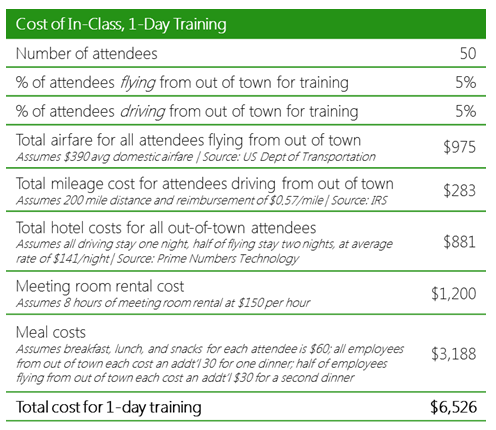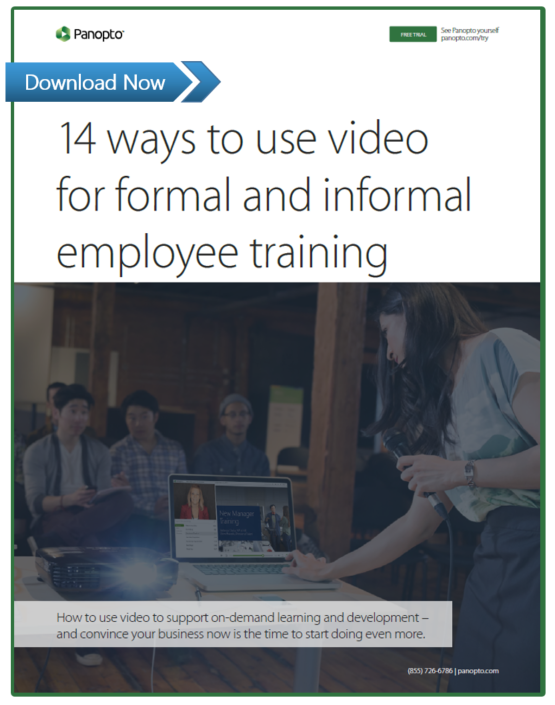- Enterprise IT/AV
Is In-Class Training Killing Your Learning & Development Budget?

Eighty-five percent.
That’s the amount of every dollar invested in corporate classroom training that’s spent just on getting people into a room. Instructor time, travel costs, meal expenses — it all adds up quickly against your budget, even before the first fact can be shared.
What does that mean in real dollars? Well, the specifics will vary for every organization, location, and event, but for a high-level view of how fast those expenses can spiral, just take a look at our latest ROI calculator example.

That’s more than six thousand dollars in travel, lodging, and food for a relatively small 1-day in-class training session. For smaller business, just a few training sessions could take a big chunk out of your L&D budget. For larger organizations — where on-site training sessions of one type or another are often available weekly or even daily — it’s easy to see how this line item alone could become a six- or seven-figure drain on your L&D or human resources budgets.
Today, organizations are starting to take notice. Many of the world’s most successful businesses have begun seeking new ways to share and scale training information — without the budgetary burden of on-location classrooms.
- After finding that up to 40% of its own classroom training costs were spent on travel and lodging, IBM moved half of its training programs to an eLearning format, saving $579 million in just 2 years.
- Oracle has credited using on-demand video rather than in-person events for saving the company more than $10 million.
- Microsoft used video to cut classroom training costs by $303 per person, from $320 to just $17.
- And Caterpillar found that e-learning generated a cost reduction of anywhere from between 40 and 80 percent over in-class training, depending on the size of its audience.
How much could you save
with video-based e-learning?
Calculate Your Savings
How Video Can Help Scale Corporate Training — Without Breaking The Budget
On-demand video enables Learning & Development teams to share training information anytime, anywhere — whenever an employee needs it.
Video enables trainers to create an e-learning environment that mirrors the classroom — bringing information and explanations to life in an engaging, visual way not possible with static text handbooks.
Best of all, video training can be saved, stored, searched, and shared. That means employees can access it from anywhere — no classroom required. And unlike in-class sessions, video makes it easy to rewind and repeat important concepts, and to search and fast-forward instantly to relevant topics.
 For trainers, meanwhile, video opens a world of opportunity to go further. Without the time required for travel and classroom logistics — not to mention repeating the same class content at different office locations — human resources and development teams can instead focus on sharing more content, going deeper with existing content, and finding new ways to cultivate organizational expertise and productivity.
For trainers, meanwhile, video opens a world of opportunity to go further. Without the time required for travel and classroom logistics — not to mention repeating the same class content at different office locations — human resources and development teams can instead focus on sharing more content, going deeper with existing content, and finding new ways to cultivate organizational expertise and productivity.
Learn more about how video solves today’s most common training challenges.
For 14 new ideas for supporting and scaling formal and informal learning with video, download our free white paper today.
Video training is no longer a novel idea. It’s the new normal. Make sure your organization isn’t missing out.



